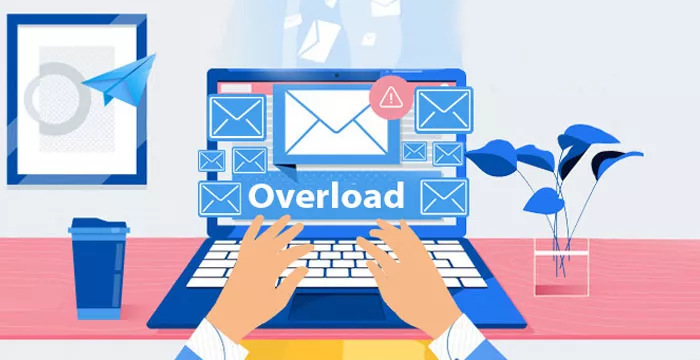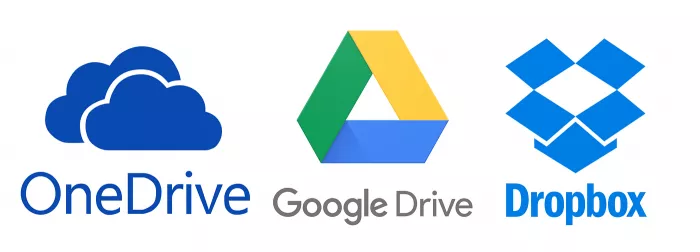
In today's fast-paced world, the way we communicate and share information has evolved significantly. With the increasing number of emails and messages we receive daily, inboxes can quickly become overloaded. Managing this overflow of information is essential for maintaining productivity and ensuring that important messages aren't lost in the digital clutter. Fortunately, there are numerous effective alternatives to Send file via email that help streamline communication and prevent inbox overload.
This article explores the top 10 ways to share information without overloading your inbox, offering practical solutions that cater to different types of data and communication needs.
1. Cloud Storage Services: Google Drive, Dropbox, OneDrive, and More

Cloud storage services are among the most popular and efficient alternatives to sending files via email. They allow you to upload and share large files without the need to clog up your inbox or send attachments that exceed file size limits.
Benefits:
- Ease of Access: Files are accessible from any device with internet access.
- Collaborative Features: You can easily share documents with multiple people and work on them simultaneously.
- Increased Storage Space: Most services offer generous storage plans to store large files.
Examples:
- Google Drive: Offers 15 GB of free storage, with integration to Google Workspace for collaborative work on Docs, Sheets, and Slides.
- Dropbox: Known for its simplicity and file-sharing features, Dropbox also provides team collaboration options.
- OneDrive: Integrated with Microsoft Office apps, it allows seamless sharing of files from Word, Excel, and PowerPoint.
By storing and sharing files via these platforms, you can share any document, image, or video without worrying about size restrictions or inbox overflow.
2. File Transfer Services: WeTransfer, Send Anywhere
File transfer services are great options when you need to send large files quickly without the hassle of using email. These services are designed to handle files that are too large to send via traditional email attachments.
Benefits:
- No Account Required: Many file transfer services don’t require users to create accounts, making them user-friendly.
- Quick Transfer: Large files can be sent in minutes without occupying your email inbox.
Examples:
- WeTransfer: Allows you to send files up to 2GB for free, with an option to upgrade for larger file transfers. It's an easy and efficient service for sending documents, photos, and videos.
- Send Anywhere: This service allows you to send files via a secure link or through a direct transfer using Wi-Fi, ensuring faster delivery without clogging your email inbox.
Using file transfer services helps you bypass the usual email attachment restrictions while keeping your inbox clutter-free.
3. Project Management Tools: Asana, Trello, Monday.com
Project management tools offer centralized platforms for sharing files, tasks, and updates among team members. These tools are particularly useful for teams and businesses that require continuous collaboration.
Benefits:
- Organized Collaboration: Files are uploaded directly to the relevant project or task, minimizing the need for email threads.
- Task Tracking: These tools also help track the progress of shared files and provide clear timelines.
Examples:
- Asana: A popular platform for organizing work, where you can attach files to tasks and assign them to team members.
- Trello: Uses a card-based system where files and documents can be uploaded and easily shared within the card's comments section.
- Monday.com: Allows file sharing directly within project workflows, making it easy to manage and collaborate on documents without email.
With these tools, the need to send individual files via email is significantly reduced, helping you stay on top of ongoing projects and tasks.
4. Messaging Apps with File Sharing Capabilities: Slack, Microsoft Teams, WhatsApp
In addition to traditional email, messaging apps are widely used for quick communication and file sharing. These tools are essential for fast-paced environments where instant updates and collaborations are necessary.
Benefits:
- Instant Communication: These apps allow for real-time messaging and file sharing.
- Centralized Communication: Keep everything in one place, so you don’t have to sift through an email inbox for important files.
Examples:
- Slack: A popular messaging platform that allows you to send files, images, and links within channels or direct messages. Slack integrates with other tools like Google Drive, Dropbox, and OneDrive, making file sharing seamless.
- Microsoft Teams: Microsoft’s communication platform, integrated with Office 365, allows you to share files within channels or during meetings.
- WhatsApp: A widely used messaging app that allows easy sharing of images, videos, and documents, especially useful for personal or small-team use.
These platforms provide an excellent alternative to email, especially for sharing quick updates, images, or documents.
5. Social Media File Sharing: Facebook, Instagram, LinkedIn
Social media platforms, although primarily used for networking and communication, also provide ways to share files, especially for marketing or public-facing purposes. This method is particularly useful when sharing visual or promotional content.
Benefits:
- Wide Reach: Social media platforms can quickly disseminate information to a broader audience.
- Engagement Opportunities: Sharing files through social media encourages engagement and feedback from your followers.
Examples:
- Facebook: You can share photos, videos, and documents with your followers via posts or within private groups.
- Instagram: Great for visual content, you can share images, stories, and videos directly with your audience.
- LinkedIn: Ideal for professionals, LinkedIn allows you to share documents and media within posts or in messages.
These platforms are effective for sharing content publicly, particularly when you need to reach a wide audience quickly.
6. Shared Folders and Links: Google Workspace, Box
Shared folders are a fantastic way to allow multiple users access to files without the need to send them through email. By creating shared folders or links, you ensure that the necessary information is accessible at all times without crowding anyone’s inbox.
Benefits:
- Collaboration: Allows teams to access and update documents in real time.
- Control: You can control who has access to the shared folder or link, ensuring security.
Examples:
- Google Workspace: Create shared folders in Google Drive for easy access to documents.
- Box: A secure cloud storage solution that offers file sharing and collaboration through shared folders.
This method works well when multiple people need access to the same set of files without the burden of managing email attachments.
7. FTP Servers
File Transfer Protocol (FTP) is a more technical, but effective, method of transferring large files, often used by web developers or those in industries dealing with large datasets or software. FTP servers allow for the uploading and downloading of files without sending them over email.
Benefits:
- Large File Handling: Ideal for large files that cannot be sent via email.
- Security: FTP servers offer higher levels of encryption and security, making them suitable for sensitive data.
Examples:
- FileZilla: A popular open-source FTP solution for transferring files securely.
- Cyberduck: A versatile FTP and cloud storage browser that works with services like Google Drive and Dropbox.
Although setting up an FTP server requires more technical knowledge, it remains an effective tool for managing large file transfers securely.
8. Encrypted Messaging Platforms: Signal, Telegram
For sharing sensitive or private information securely, encrypted messaging platforms are a strong alternative to email. These platforms ensure that your communication is protected with end-to-end encryption, meaning no one else can intercept or read your messages.
Benefits:
- Privacy and Security: Ensures that files shared are encrypted and secure.
- Instant Delivery: Like other messaging apps, these platforms allow for quick file sharing.
Examples:
- Signal: Known for its strong encryption, Signal allows you to share images, documents, and videos securely.
- Telegram: Offers end-to-end encryption, making it a reliable option for sharing files confidentially.
If privacy is a top concern, these encrypted messaging platforms offer an excellent alternative to email.
9. Video Conferencing Tools: Zoom, Google Meet, Microsoft Teams
While video conferencing tools are primarily used for virtual meetings, they also allow file sharing during calls. This method can be particularly effective when discussing documents or files in real time.
Benefits:
- Real-Time Discussion: Share and review files during live meetings, improving communication.
- File Integration: Many conferencing tools allow you to upload and share files directly during calls.
Examples:
- Zoom: Allows users to share files during a meeting and also has cloud storage options for saving recordings and documents.
- Google Meet: Integrated with Google Workspace, it enables sharing of files and documents during meetings.
- Microsoft Teams: Allows for seamless file sharing alongside real-time video and audio communication.
Video conferencing tools are a great choice when sharing files and discussing them in real-time with colleagues or clients.
10. Digital Signatures and eForms
When you need to share legal or business documents that require signatures, digital signatures and electronic forms can be used instead of sending files via email. This ensures that files are processed quickly and securely.
Benefits:
- Legality and Security: Digital signatures are legally binding and encrypted, ensuring security.
- Ease of Use: eForms make it easy to collect signatures without the need for physical documents.
Examples:
- DocuSign: A popular tool for signing and sharing legal documents securely.
- Adobe Sign: Another reliable digital signature platform that integrates with various cloud storage services for file sharing.
These tools streamline the process of managing official documents, reducing the need for excessive email communication.
Conclusion
Managing inbox overload is a challenge that many of us face daily, especially when it comes to sharing large files or sensitive information. By using the 10 methods outlined above, you can keep your inbox clean, improve your workflow, and maintain security and privacy while communicating effectively. Whether you choose cloud storage services, file transfer tools, or project management platforms, these alternatives to sending files via email will help you collaborate more efficiently and avoid unnecessary clutter.





Comments